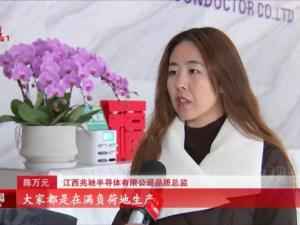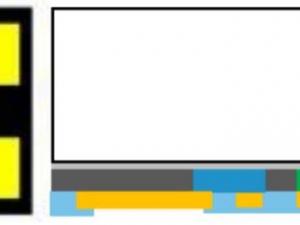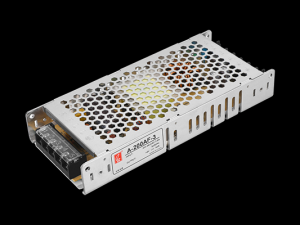Hisense 2025 Autumn Conference: RGB-Mini LED Dual Flagship TV debut
- author:
- 2025-09-30 14:19:23
On September 26, 2025, Hisense's 2025 autumn TV new product launch conference was held as scheduled. At the conference, it not only launched the RGB-Mini LED dual flagship U7S Pro, E8S Pro and high-end flagship E7Q series new products, but also used the technology definition attitude., systematically explain the core breakthroughs of the new generation of RGB-Mini LED technology, redelineate the image quality standards of high-end TVs through the full chain of upgrades of chips, image quality chips and algorithms, and at the same time release open cooperation and joint promotion of technology popularization industry signals.
Technological breakthrough: At the conference on reconstructing the core standard of RGB-Mini LED, Hisense clearly proposed for the first time the three core elements of a real RGB-Mini LED TV: RGB three-primary color chips, light-color co-control image quality chips and light-color co-control algorithms, and Through technological upgrades to achieve breakthroughs in three major dimensions. In order to allow the industry to clearly understand the technological differences, Hisense also systematically demonstrated the current three mainstream Mini LED backlight solutions: RGB-Mini LED backlight that controls light but not color, RGB-Mini LED backlight that controls light color, and traditional monochrome LED control The light solution, while itself firmly adopts the high-level solution of RGB-Mini LED backlight + light color control, highlighting its determination to lead the technology.
RGB three-color chip
At the level, Hisense has completed a key upgrade from a single crystal structure to a polycrystalline structure. This structural innovation has brought about three significant improvements: the brightness of the RGB single lamp has soared by 120%, solving the pain point of insufficient brightness of the Mini LED screen; the picture uniformity has been increased by 30%, effectively eliminating the halo problem of traditional backlights; and at the same time, harmful blue light output is reduced by 42%, which ensures image quality while taking into account eye health, achieving a balance between visual experience and health protection.

Light and color simultaneous control image quality chip
is the core hub of this technology upgrade. The Xinxin H7 image quality chip launched by Hisense is praised as the industry's first chip to achieve simultaneous control of light and color. With the current highest color control accuracy of 108bits, it can perform fine pixel-level adjustments to the color and brightness of the backlight. The chip integrates the bionic technology of the Xinghai Large Model, deeply integrates the human eye's perception laws with imaging technology. Through 26bits gray scale and 15680-point color accuracy control, the picture level is richer and the detail transition is more natural.
algorithm level
However, Hisense has successfully overcome the industry's stubborn problem that it is difficult to control light color synchronously and accurately. Its self-developed light and color co-control algorithm achieves millisecond-level synchronous response between backlight brightness and picture color, improving color accuracy by nearly 70%. Combined with AI Ultra-Clear Deconstructing Pro technology, 3.2K resolution content can be intelligently improved to 4K level, while eliminating film noise and ghosting;AI Human Eye Depth of Field Tracking Pro technology can simulate the human eye focus logic, allowing the three-dimensional effect of the picture to be improved by 54.4%, building an immersive visual experience.
New products shine sword: Dual flagship interpretation of high-end image quality As the carrier of the new generation of RGB-Mini LED technology, the appearance of two dual flagship TVs, U7S Pro and E8S Pro, has become another major focus of the conference. The two are respectively targeted at different usage scenarios transform technical advantages into a perceptible audio-visual experience.
U7S Pro
Positioning itself as the flagship of all-round image quality, it is equipped with the exclusive black screen Ultra. Through the innovative design of double-layer nanoscale LR low-reflection films and matrix-type multilayer polarizer, it achieves 1.28%. Ultra-low reflectivity, which is 4 times higher than ordinary TVs. It can effectively resist glare even in strong light environments, allowing users to watch movies during the day without having to pull curtains. Its panel backlight is equipped with 5760 color control zones. With the Xinxin AI image quality chip H7, the brightness of the XDR Pro can reach 4700 nits. Combined with 178 wide viewing angle and STW multi-dimensional wide viewing angle technology, you can obtain accurate colors no matter which angle you view. With a picture with clear details, the color three-dimensional degree is significantly improved. This model is available in three versions: 75, 85, and 100-inch. The initial prices are 15999 yuan, 19999 yuan, and 28999 yuan respectively. The official retail prices correspond to 16999 yuan, 20999 yuan, and 30999 yuan. Pre-sales have been fully opened.

E8S Pro
focuses on precise optimization based on scenes, adopting a multi-crystal high-brightness RGB-Mini LED three-primary color self-luminescent chip, equipped with up to 9360 light control color partitions, which can be directly displayed in the backlight layer compared to ordinary Mini LED panels. Display three colors of RGB to achieve more extreme light control accuracy. Relying on the computing power support of the Xinxin AI image quality chip H7, this model is specially optimized for different scenes such as games and movie viewing: AI Smart Vision Pro technology is used to intelligently identify picture elements and adjust the image quality in real time when watching movies. Optimize response speed and dynamic display effects to meet diverse entertainment needs. Currently, this model has been booked on the Jingdong platform and will be officially launched for pre-sale at 20:00 on October 14.
Industry co-construction: An open attitude accelerates technology popularization At the end of the press conference, Hisense expressed its open attitude towards coordinated development of the industry. It clearly stated that more brands are welcome to join the RGB-Mini LED TV camp, believing that multi-party participation will help expand the market scale, accelerate technology iteration and cost optimization, and allow high-end display technology to enter ordinary households faster. This statement not only demonstrates Hisense's technical confidence in the field of RGB-Mini LEDs, but also reflects the responsibility of leading companies to promote industry progress.
From the definition of technical standards, to breakthroughs in core devices, to the implementation of terminal products, Hisense completed the full-link layout in the RGB-Mini LED field through this autumn conference. The launch of new dual flagship products not only provides consumers with new options for high-end TVs, but also uses technological innovation to push the entire industry towards a high-level stage of simultaneous control of light and color. With the opening of pre-sale and reservation channels, Hisense is practicing the concept of technological inclusiveness with practical actions, bringing the 8K ultra-high definition audio-visual experience closer and closer to public life.
TAG:
Guess you want to see it
Popular information
-
CEO of TV IKLAN Group, Indonesia's largest media company, led a delegation to inspect MNLED and the

-
Li Jun, Chairman of Liard Group, helps his hometown's public welfare undertakings and contributes to
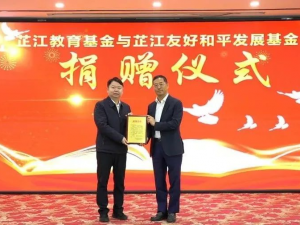
-
AI glasses are in full swing, and giants are competing to enter the game to seize the new track

-
AET Altai launches a new generation of COB display products NX COB Ultra series at InfoComm China 20
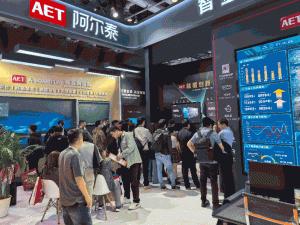
-
Six companies showed that the half-year exam results of companies were released, and some were happy

-
TCL Huaxing MLED project won its first battle, and mass production of COB display helped industrial

-
TCL Technology plans to invest 29.5 billion yuan to build the world's first 8.6-generation printing

-
TCL officially announced Gu Ailing as a global brand spokesperson and went on an extraordinary journ

-
Luo Huaxin Display Technology established the Artificial Intelligence Research Institute to lead the

-
Liard·virtual moving points help the development of embodied intelligent robots and unlock new skill
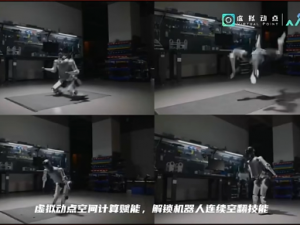
the charts
- CEO of TV IKLAN Group, Indonesia's largest media company, led a delegation to inspect MNLED and the
- Innolux joins hands with Yuantai, TPV and others to introduce large size color electronic paper into
- Xida Electronics signs a strategic cooperation agreement with Changbai Mountain Chixi District Manag
- Liard joins hands with "Three-Body" to open a new era of science fiction drama in China
- Zhaochi Semiconductor joins hands with Li Xing Semiconductor. Want to do big things?
- Zhou Ming joins hands with the Guangdong Basketball Association to produce another masterpiece! The
- ISE2023 Abbison's first exhibition in the new year has received frequent good news, and the immersiv
- Samsung Display and APS "work together" to create 3500ppi Micro OLED
- Zhouming Technology and Perfect World officially reached an educational ecological partnership!
- Longli Technology:Mini-LED has been shipped in batches to some in-vehicle customers, VR customers, e

